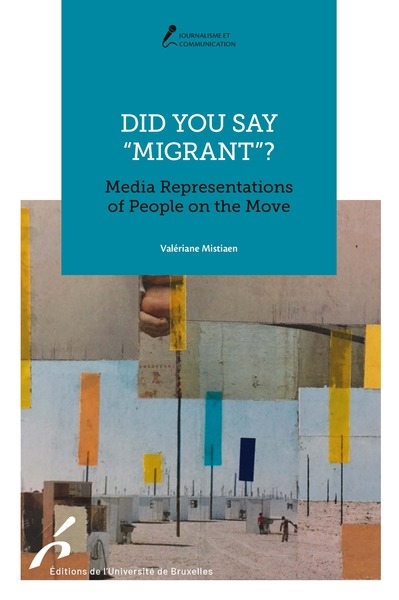en savoir plus

Permet à tous ses détenteurs d'obtenir 5% de réduction sur tous les livres lors du retrait en magasin (réduction non cumulable avec les réductions de type étudiant).
Offre également un certain nombre d'avantages auprès de nos partenaires.
Avec les favoris, retrouvez dans un espace les sélections effectuées au fur et à mesure de vos navigations dans le site.
Constituez pour votre usage personnel vos listes de livres en prévisions d'achats futurs et votre sélection d'articles, dossiers, événements, vidéos ou podcasts préférés ou à découvrir plus tard...
Il suffit simplement de cliquer sur "Ajout Favori" sur chaque page qui vous intéresse pour les retrouver ensuite dans votre espace personnel.
Requiert un compte Mollat
Requiert un compte Mollat
- Sciences humaines - Histoire
- Questions de société
- Information et médias
- Sociologie de l'information et de la communication
Did you say migrant? : media representations of people on the move
Auteur : Valériane Mistiaen
en savoir plus
Résumé
S'appuyant sur une approche discursive combinant analyse du discours et linguistique, l'autrice examine la façon dont les médias belges font référence aux personnes déplacées. Elle analyse notamment la couverture médiatique dans les communautés francophone et néerlandophone, comparant la représentation de la migration dans deux régions culturellement, linguistiquement et politiquement distinctes. ©Electre 2025
Quatrième de couverture
Did you say « migrant » ?
The 2011 war in Syria triggered a wave of people seeking asylum in Europe, bringing immigration into the political and media spotlight and sparked numerous debates on displaced people. These debates have been marked by a heightened focus on the terminology used to describe people on the move. Terms such as refugee, migrant, immigrant, asylum seeker, illegal immigrant, and displaced person have circulated in the media, often blurring public understanding of events or conveying contradictory representations of those involved. Moreover, the words used to define people on the move are not fixed in time ; their meaning and reference emerge from events and social representations, thus shaping both the public issue of migration and the image of the social actors concerned.
Using a discursive approach that combines discourse analysis and corpus linguistics, this book examines how the Belgian media referred to displaced people. It is innovative in three key ways. First, it analyses media coverage in both the French-and Dutch-speaking communities of Belgium, allowing for comparisons of how migration was represented in two culturally, linguistically, and politically distinct regions of the same country. Secondly, it studies both written and audiovisual media by drawing on an extensive dataset of 13,391 press articles and 3,490 television news items. Finally, it goes beyond the most commonly used terms related to migration while exploring a significantly broader range of designations that has previously been studied.
This book contributes to our understanding of how language shapes social debates and constitutes an essential resource for anyone interested in the multilingual analysis of media texts.
Fiche Technique
Paru le : 10/07/2025
Thématique : Sociologie de l'information et de la communication
Auteur(s) : Auteur : Valériane Mistiaen
Éditeur(s) :
Ed. de l'Université de Bruxelles
Collection(s) : Journalisme et communication
Série(s) : Non précisé.
ISBN : 978-2-8004-1908-4
EAN13 : 9782800419084
Reliure : Broché
Pages : 299
Hauteur: 24.0 cm / Largeur 16.0 cm
Épaisseur: 1.8 cm
Poids: 529 g

